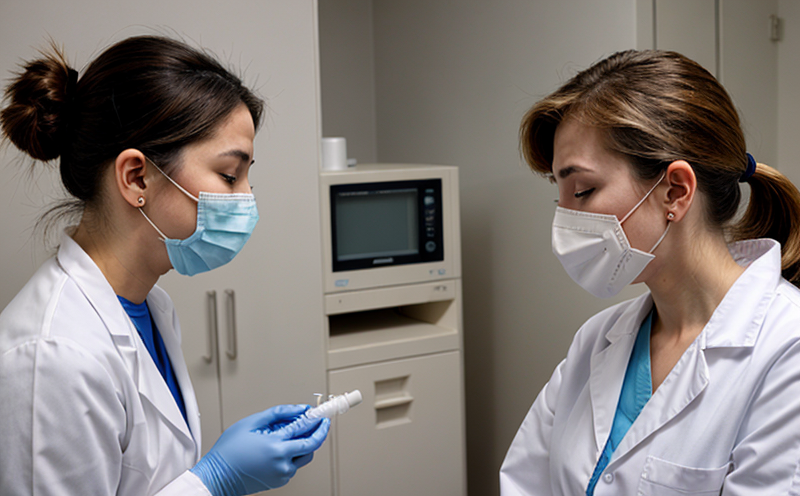Allergen Stability Testing in Processed Foods
Ensuring food safety and compliance with labeling regulations is paramount in the processed foods industry. Allergens, such as peanuts, tree nuts, milk, eggs, soy, fish, shellfish, and wheat, can pose significant risks to individuals with allergies or intolerances. Stability testing of allergens in processed foods ensures that these potentially harmful substances remain inactive under specified conditions, thereby minimizing the risk of allergic reactions.
The process involves subjecting potential allergens to various environmental factors such as heat, light, moisture, and pH levels typical of processing and storage environments. The goal is to assess whether the allergen remains stable or degrades over time. This stability can be crucial in determining appropriate labeling practices and ensuring compliance with international standards like ISO 25197:2014, which provides guidelines for the management of food allergens.
In this testing process, processed foods are subjected to a series of controlled conditions that mimic real-world scenarios. For instance, samples may be exposed to temperatures ranging from room temperature up to 60°C for extended periods to simulate processing and storage conditions. Additionally, light exposure, humidity levels, and pH adjustments are considered to evaluate the allergen's stability.
Once the testing is complete, the results help determine whether the processed food product meets regulatory requirements or if further modifications are needed. This information is critical not only for compliance but also for protecting public health by reducing the risk of accidental consumption of allergens that could trigger severe allergic reactions.
The methodology used in allergen stability testing includes sample preparation, incubation under defined conditions, and subsequent analysis using validated analytical techniques such as ELISA or HPLC. The data collected from these analyses are then compared against established thresholds to determine the allergen's stability.
The importance of this testing cannot be overstated. Consumers with food allergies rely on accurate labeling and processing methods that ensure their safety. By conducting thorough stability tests, manufacturers can build trust in their brands and avoid potential legal ramifications associated with non-compliance or accidental contamination.
Why It Matters
Allergen stability testing is essential for several reasons:
- To ensure compliance with international food safety regulations such as FDA, EC, and CAC guidelines.
- To protect consumers, especially those with severe allergies who could face life-threatening reactions if exposed to allergens.
- To safeguard the reputation of food manufacturers by ensuring product safety and quality.
- To facilitate accurate labeling practices that inform consumers about potential allergen content in processed foods.
By conducting thorough stability testing, companies can reduce the risk of legal action due to non-compliance or accidental contamination. This proactive approach not only enhances brand reputation but also fosters consumer confidence and loyalty.
Industry Applications
| Application Type | Description |
|---|---|
| Packaging and Labeling | Evaluating allergen stability ensures accurate labeling, which is critical for consumer safety. |
| R&D and Formula Development | Stability testing helps in optimizing processing methods to maintain allergen integrity throughout the production process. |
| Supply Chain Management | Assuring stability across supply chains reduces contamination risks and maintains product quality. |
| Quality Assurance and Control (QA/QC) | Regular stability testing forms part of a robust QA/QC program to ensure consistent product quality. |
- Packaging and Labeling: Accurate labeling is crucial for informing consumers about potential allergen content, thereby protecting those with allergies or intolerances.
- R&D and Formula Development: Understanding how allergens behave under various processing conditions aids in optimizing formulas to maintain safety and efficacy.
- Supply Chain Management: Ensuring stability across the supply chain minimizes contamination risks and maintains consistent product quality.
- Quality Assurance and Control (QA/QC): Regular stability testing is integral to a comprehensive QA/QC program, ensuring that products consistently meet high standards of safety and quality.
Competitive Advantage and Market Impact
Earning the trust of consumers through reliable allergen stability testing can significantly enhance a company's market position. Consumers increasingly prioritize product safety, especially when it comes to food items containing known allergens. By demonstrating a commitment to rigorous testing protocols, companies not only meet regulatory requirements but also set themselves apart in the competitive marketplace.
Moreover, this level of scrutiny helps identify potential issues early on, allowing for timely adjustments and improvements in processing methods. This proactive approach can lead to innovations that enhance product safety without compromising quality or taste.
The market impact extends beyond consumer trust; it also influences regulatory bodies and industry standards. Companies that consistently adhere to high standards set benchmarks for the entire sector. This leadership role often leads to greater recognition within the industry, fostering partnerships and collaborations that can drive further advancements in allergen management practices.





